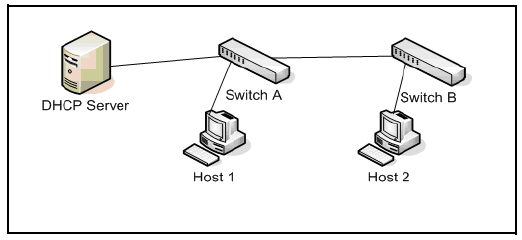Trusted ports
In a similar way to DHCP snooping, dynamic ARP protection allows you to configure VLAN interfaces in two categories: trusted and untrusted ports. ARP packets received on trusted ports are forwarded without validation.
-
The switch intercepts all ARP requests and responses on the port.
-
Each intercepted packet is checked to see if its IP-to-MAC binding is valid. If a binding is invalid, the switch drops the packet.
In contrast, if Switch A does not support dynamic ARP protection and you configure the port on Switch B connected to Switch A as trusted, Switch B opens itself to possible ARP poisoning from hosts attached to Switch A.

-
Configure ports connected to other switches in the network as trusted ports. In this way, all network switches can exchange ARP packets and update their ARP caches with valid information.
-
Switches that do not support dynamic ARP protection must be separated by a router in their own Layer 2 domain. Because ARP packets do not cross Layer 3 domains, the unprotected switches cannot unknowingly accept ARP packets from an attacker and forward them to protected switches through trusted ports.